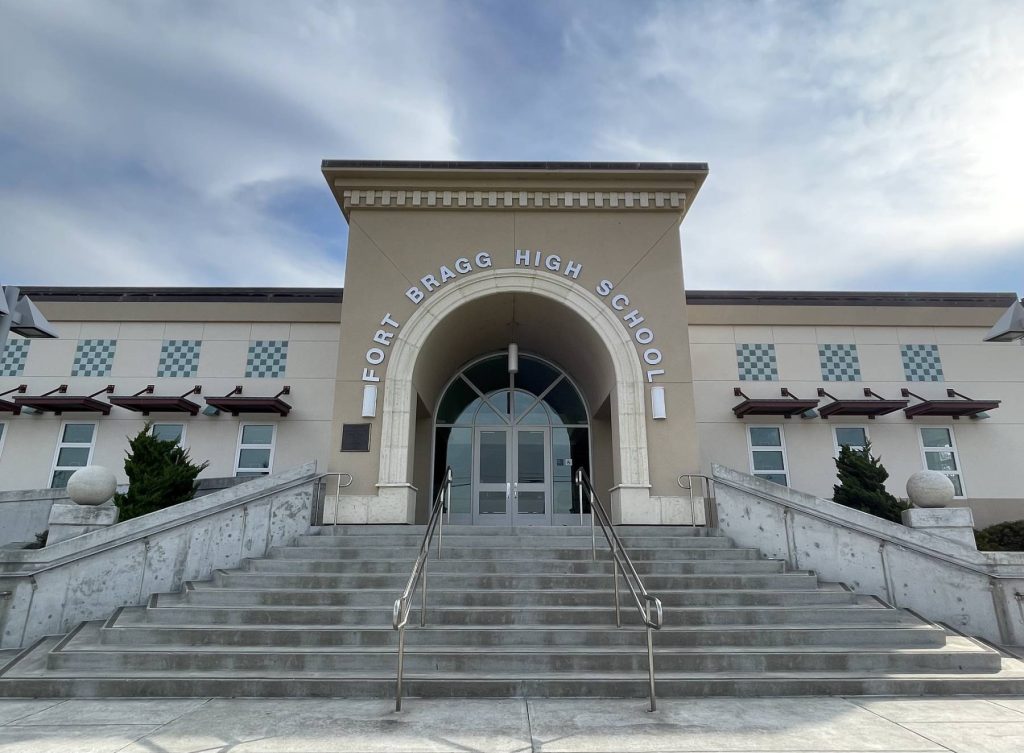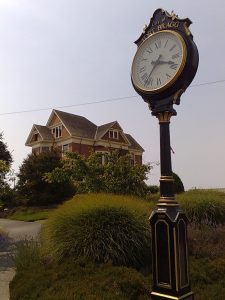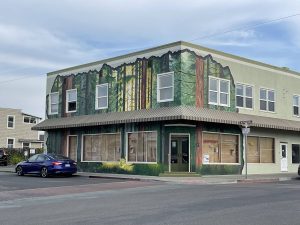Often Preservation is about “Change”: A Brief Look at the Efforts to Change the Name of Fort Bragg, CA
Get CPF updates
Sign up below to receive advocacy alerts and updates from CPF.
Sometimes you have to change something to preserve it.
The idea to change the name of Fort Bragg, CA. began 160 years ago. First Lieutenant Orlando H. Moore assumed command at the Fort after the outbreak of the Civil War and in June 1861 asked that the name be changed “for patriotic motives.” (Strobridge p.244) In October 1862, the commander of the Humboldt Military District, Colonel Francis J. Lippitt, wrote: “Fort Bragg, in my district, had long enough borne the name of a traitor.” (Strobridge, p.246)
We can only imagine that in the midst of of the Civil War the Federal government had more to worry about than the name of a fort in the far west of the country.
But people have been trying to change the name of this place ever since.
We owe our current quandary to the whim of just one man, First Lieutenant Horatio Gates Gibson, who was sent north from the Presidio in 1857 with twenty troopers to police the Mendocino Indian Reservation, established in 1856 to contain the native inhabitants of our area. The Reservation, laid out between the Noyo and Ten Mile Rivers, functioned as a concentration camp, corralling the Natives and making it impossible for them to hunt or fish or continue their way of life. The troopers at the Fort kept the Indians prisoner and dragged back any escapees while the newly arriving White settlers stole the land the Natives had inhabited for ten thousand years. The result was disastrous. According to historian Robert Winn: “Between 1858 and 1873 the population of the Yuki decreased from 3000 to 500, while the population of the Pomo fell from 3600 to 1800.” (Winn, pg. 31)
Lieutenant Gibson had, on his own initiative, named the Fort, eventually sixteen buildings around a parade ground, for Bragg, his commander in the Mexican American War. Bragg had, in 1857, returned to civilian life and established a sugar plantation in Louisiana where he worked 105 enslaved men, women, and children to make himself one of the richest men in that state. In 1861, he was appointed a general in the Confederate Army.
Fort Bragg, the Fort, was decommissioned in 1864. Soon after the Army marched all the Indians over the hill to another reservation in Round Valley opening up the entire area along the coast to White settlers. The Fort was gone. The Reservation was closed. Various names lingered in the air.
One town, for example, just 37 miles away, was originally named The Corner, then Kendall’s City, then Booneville, and, at the moment, Boonville. Nearby Mendocino went through various appellations from Big River, to Meiggstown, to Mendocino City. And those were just the names the White settlers gave this area.
The local Indian bands, Yuki, Pomo, Karin, Hua, Tolowa, Wiyot, and Yurok hunted, fished, raised families and died here for millennia. Each of these groups had a distinct tribal language and each had a different name for this place.
In Genesis, God gave Adam and Eve the power to name. Naming is owning. Naming is power. And taking your name away means dispossessing and disempowering. That’s why the settlers of the 1850’s imposed their names, their language, their culture, and their own racial hierarchy on the people they encountered and conquered here. When the city incorporated in 1889, 25 years after the Civil War, 20 years after Bragg’s death, the new city fathers chose the name Fort Bragg.
Today, renaming means excavating history and learning from it. As Sherwood Valley Tribal Council Secretary Buffy Wright Bourassa told us: “Reconciling with the history of these lands and peoples involves decolonization, starting with the renaming of Fort Bragg, to honor the original inhabitants and shed important light on the true spirit and facts of this land. The goal is to acknowledge the past and give it meaningful recognition.” (email 11/14/23).
The effort to rename Fort Bragg continues. In 2015 the California legislative Black Caucus asked the town to change its name pointing to “the inappropriateness of any public entity promoting individuals that committed treason against our nation during the Civil War and fought to defend the defenseless cause of slavery.” (Santa Rosa Press Democrat July 16, 2019 https://www.pressdemocrat.com/article/news/legislative-black-caucus-members-ask-fort-bragg-to-change-name/)
In 2022 we formed “Change Our Name Fort Bragg,” a 501(c)(3) nonprofit to educate our neighbors about the need for change. We leaflet, hold teach-ins, and petition our representatives. Both Governor Newsom and our Congressman, Jared Huffman, have already spoken in favor of the renaming.
When Tanda Blu Bear of the Kashia Band of Pomo Indians of the Stewarts Point Rancheria spoke at one of our teach-ins she told us what not renaming the city meant: “Here we are. Fort Bragg. It’s a freaking name. To change it is a very, very small piece that would allow us, people like me, to heal. Holding on to it is something I am questioning; the sanity of people who want to hold on to [this name]. Why?” (May 17, 2024).
More information on the effort to rename Fort Bragg can be found at our website: https://www.changeournamefortbragg.com/
Sources
- An American Genocide: The United States and the California Indian Catastrophe 1846-1873; Benjamin Madley
- Regulars in the Redwoods: The U.S. Army in Northern California 1852-1861; William F. Strobridge.
- The Mendocino Indian Reservation; Robert Winn.







